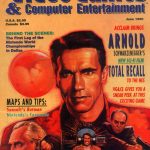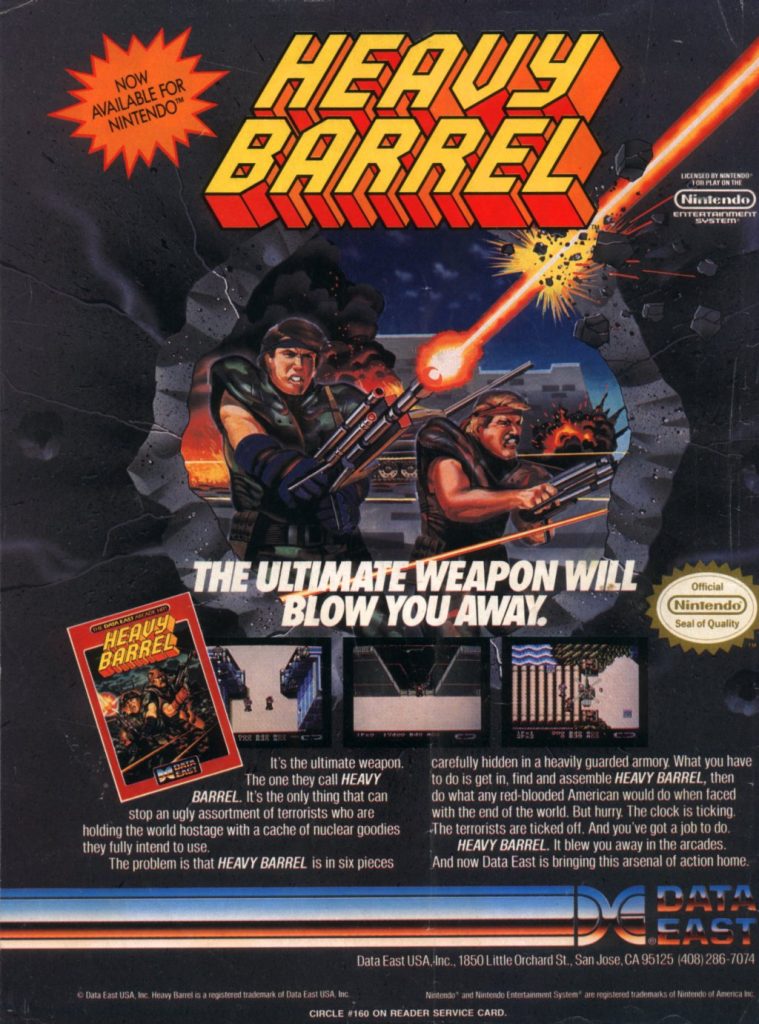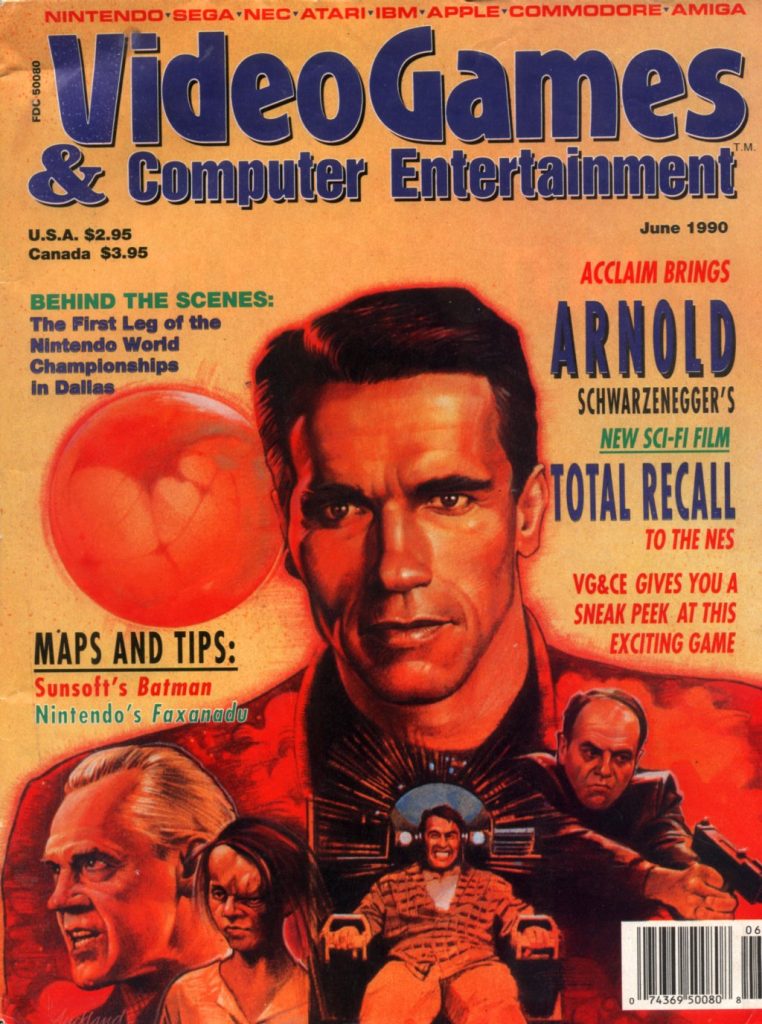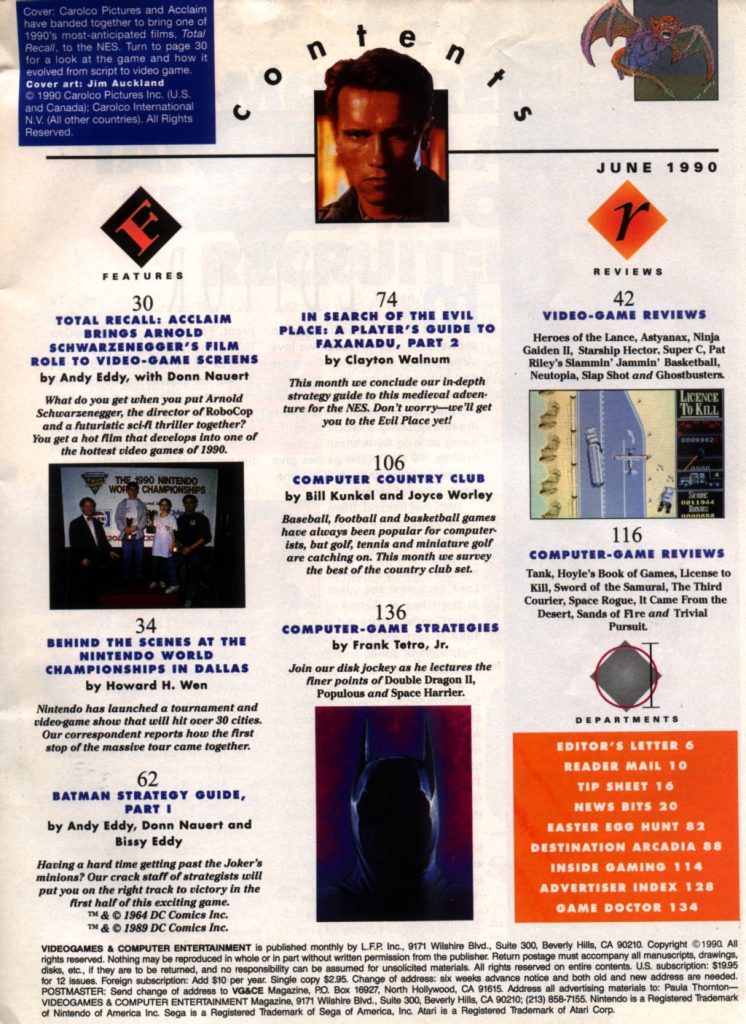
- Tag Archives Genesis
-
-
 Electronic Gaming Monthly (August 1996)
Electronic Gaming Monthly (August 1996)
Electronic was perhaps the most popular video gaming magazine in the U.S. during its peak. Sadly, though there are still some niche magazines out there, the days of popular video gaming magazines are long gone. The August 1996 issue of EGM includes:
Departments
- Insert Coin – Steve Harris leaves EGM as publisher.
- Press Start – The state of 3-D gaming tech with a look at such products as the CyberMaxx head-mounted display and the HMD Dynovisor; a look at the upcoming Nintendo 64; Xband modem for the Saturn; and more.
- Review Crew – Reviews of Gun Griffon (Saturn), Bugs Bunny in Double Trouble (Genesis), Shockwave Assault (Saturn), Bogey: Dead 6 (PlayStation), Bust-A-Move 2 (PlayStation), Simcity 2000 (PlayStation), Space Hulk (PlayStation), Ninja Masters (Neo Geo), Heavy Metal (Game Gear), and Dragonheart (Game Boy).
- Gaming Gossip – News and rumors including: Crash 2 in progress; Sony to sell RPG combos; More N64 game developers; Sega’s upcoming 64-bit system to sell for $250; Street Fighter 3; and more.
- Tricks of the Trade – Tips and tricks for Solar Eclipse (Saturn), Guardian Heroes (Saturn), Agile Warrior (PlayStation), Super Mario RPG (Super NES), PO’ed (PlayStation), Slam ‘N Jam ’96 (PlayStation), Bust A Move 2 (PlayStation), Return Fire (PlayStation), Resident Evil (PlayStation), Night Warrior: Darkstalkers’ Revenge (Saturn), King of Fighters ’95 (Saturn), Vectorman (Genesis), Battle Arena Toshinden Remix (Saturn), and more.
- Special Features – A look at Capcom’s latest arcade translation, Street Fighter Alpha 2.
- Next Wave Protos – An early look at upcoming games still under development including Clayfighter 3 (PlayStation), Star Trek: Starfleet Academy (PlayStation), Power Rangers Battle Racers (Super NES), Virtual Pro Pinball (PlayStation, Saturn), Powerslave (PlayStation, Saturn), Iron & Blood (M2), VF Kids (Saturn), MTV’s Slam Scape (PlayStation), Marvel 2099 (PlayStation), Magic Knight Rayearth (Saturn), Dark Savior (Saturn), The Divide: Enemies Within (PlayStation), Power Rangers Pinball (PlayStation), Dark Rift (Nintendo 64), Three Dirty Dwarves (Saturn), Discworld 2 (PlayStatiob), World Heroes (Saturn), Tetris (Saturn), Prince of Persia (Super NES), Chaos in Lemmingland (PlayStation), Incredible Hulk (PlayStation, Saturn), and Fighting Vipers (Saturn).
- Team EGM – This sports section includes previews of Madden ’97 (PlayStation), Tecmo World Golf (PlayStation), Supersonic Racers (PlayStation), Grand Slam (PlayStation), NCAA Basketball: Final Four ’97 (PlayStation), NCAA Football: Saturday Showdown (PlayStation), and Burning Road (PlayStation). Also included are reviews of Adidas Power Soccer (PlayStation), Big Hurt Baseball (PlayStation), NBA Action (Saturn), and World Series Baseball ’96 (Genesis).
- Interface – Letters from readers about pirating games, Final Fantasy V, audio problems with the PlayStation, multiplayer RPGs on the Super NES, and more.
Features
- Big Names and Big Games at Japan’s Toy Show – Coverage of the 1996 Tokyo Toy Show which included the latest games for the PlayStation, Saturn, and Super NES such as Virtua Fighter 3, Street Fighter Alpha 2, and many others.
- Williams Gears Up For The Future of Gaming – Playtesting some upcoming Williams’ Nintendo 64 games including Mortal Kombat Trilogy, Wayne Gretzky’s Hockey 64 plus some other upcoming Williams’ games for other systems including Final Doom, Area 51, Robotron X, Ms. Pac-Man, and Williams Arcade’s Greatest Hits 2 and 3.
- Gamers Will Flip For Sony’s Furry New Hero! – A look at Crash Bandicoot for the PlayStation.
Next Wave
- Saturn – Previews of upcoming Sega Saturn games including Dragon Force by Working Designs, Loaded by Interplay, Gun Griffon by Sega, and Shockwave Assault by Electronic Arts.
- PlayStation – Previews of upcoming Sony PlayStation games including Dark Forces by LucasArts, Dead 6 by SCEA, Blast Chamber by Activision, and Iron and Blood Warriors of Ravenloft by Take 2.

…and more!
-
 VideoGames & Computer Entertainment (June 1990)
VideoGames & Computer Entertainment (June 1990)
VideoGames & Computer Entertainment was my favorite video game magazine of the late 1980s and early 1990s. Some of the key people responsible for the original Electronic Games magazine were involved with VG&CE. It eventually evolved into Tips & Tricks which wasn’t really my cup of tea. The June 1990 issue of VG&CE includes:
Features
- Total Recall: Acclaim Brings Arnold Schwarzenegger’s Film Role to Video-Game Screens – A detailed look at this NES game based on the movie of the same name. Like most licensed games, this one wasn’t great though I suppose it was better than some. It definitely has the nostalgia factor going for it.
- Behind the Scenes at the Nintendo World Championships in Dallas – The Nintendo World Championship had to be just about the height of the NES era. It was sort of a case of life imitating art as The Wizard had just been released in theaters the year before.
- Batman Strategy Guide, Part I – The first part of a detailed strategy guide for Batman: The Video Game for the NES. While licensed games are pretty poor the vast majority of the time, this one bucks the trend and was actually a solid game. The game and the movie are probably still my Batman favorites.
- In Search of the Evil Place: A Player’s Guide to Faxanadu, Part 2 – The second part of a detailed strategy guide for this classic NES adventure game.
- Computer Country Club – An overview of available golf and tennis games. Some of the golf games looked at here include Accolade’s Mean 18, Hole-In-One (miniature golf), Mini-Putt, World Tour Golf, World Class Leaderboard, Jack Nicklaus’ Greatest 18 Holes of Major Championship Golf, Table Tennis Simulation, Serve & Volley, and others.
- Computer-Game Strategies – Brief strategy guides for Double Dragon II (Amiga, Atari ST, Commodore 64, IBM PC), Populous (Amiga, IBM PC), and Space Harrier (Amiga, Atari ST, Commodore 64, IBM PC).
Reviews
- Video-Game Reviews – Reviews of Heroes of the Lance (NES) – (while I loved the Gold Box series of D&D games, I thought this action oriented game was pretty terrible), Astyanax (NES) – (I actually didn’t care for this one much though it got good reviews), Ninja Gaiden II (NES), Starship Hector (NES), Super C (NES), Pat Riley’s Slammin’ Jammin’ Basketball (Sega Genesis), Neutopia (TurboGrafx-16), Slap Shot (Sega Master System), and Ghostbusters (Sega Genesis).
- Computer-Game Reviews – Reviews of Tank (Spectrum Holobyte for the IBM PC), Hoyle’s Book of Games (Sierra On-Line for the IBM PC), License to Kill (Domark/Broderbund for the Amiga, Atari ST, IBM PC, and Commodore 64), Sword of the Samurai (Microprose for the IBM PC), The Third Courier (Accolade for the IBM PC), Space Rogue (by Origin for the Apple II, Commodore 64, and IBM PC – I always wanted this one), It Came From the Desert (by Cinemaware for the Amiga, Atari ST, IBM PC), Sands of Fire (by Three-sixty Software for the IBM PC and Macintosh), and Trivial Pursuit (by Parker Brothers for the IBM PC).
Departments
- Editor’s Letter – Andy Eddy discusses games based on movies and celebrities in video games.
- Reader Mail – The letters from readers this month are mostly about Nintendo’s business practices and then current anti-trust issues.
- Tip Sheet – The inaugural edition of this column includes tips and basic strategies for Kung-Fu Heroes by Culture Brain for the NES.
- News Bits – Joe Montana signs deal with Sega, new add-on for A-10 Tank Killer, Defender of the Crown creator developing Centurion: Defender of Rome, Atari opens up direct phone line for orders of Atari Lynx and Portfolio products, new newsletter for Amiga gamers, Commodore to market games machine based on Amiga 500, and much more.
- Easter Egg Hunt – Hidden features and secrets in Double Dragon II (NES), Golden Axe (Genesis), Revenge of Shinobi (Genesis), and Fighting Street (TurboGrafx-16).
- Destination Arcadia – A look at new games shown at the 1990 Acme Show in Chicago including DJ Boy from American Sammy, WWF Superstars from Technos, Klax from Atari, AmeriDarts from Ameri Corporation, Four Trax from Atari, Badlands from Atari, Metal Hawk from R. H. Belam, Capcom Bowling from Capcom, Buster Bros. from Capcom, Mercs from Capcom, Final Fight from Capcom, Vapor Trail from Data East, Too Crude – Double Dragon from Data East, Rai Den from Irem, Dragon Breed from Irem, R-Type II from Irem, Toki from Irem, Aliens from Konami, Teenage Mutant Ninja Turtles from Konami, Off Road from Leland, Trog from Bally/Midway, PlayChoice from Nintendo, Fire Shark from Romstar, Beast Busters from SNK, Neo-Geo System from SNK, Line of Fire from Sega, M.V.P. from Sega, Cadash from Taito, and lots more.
- Inside Gaming – A look at who might win the upcoming video game battle between Nintendo, Sega, and NEC.
- Game Doctor – Questions answered about music on the SMS, the NES expansion port, the TurboGrafx-16 CD-ROM add-on, transferring files between an Apple II and IBM PC, and more.

…and more!







